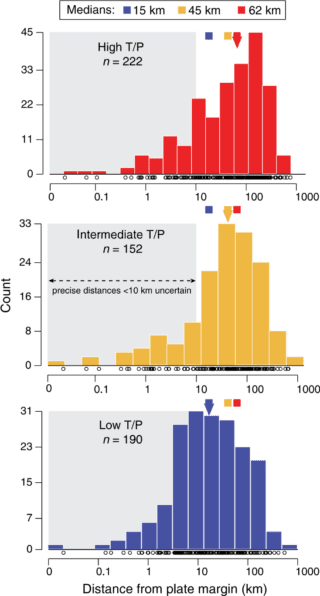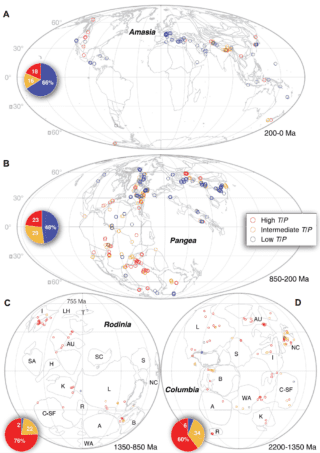Metamorphic record of 2 billion years of plate tectonics and supercontinent cycles
Since the Jurassic, there has been a clear spatiotemporal correlation between different types of metamorphism and active convergent plate margins. This correlation has been assumed to extend into the more ancient part of Earth history, but had never been rigorously tested. A recent study led by EDRG member, Yebo Liu, attempted to discover if such a correlation holds true back to 2 billion years ago. The study has been published in Geology.

This study quantitatively constrained, for the first time, the distance of metamorphic rocks when they formed and the nearest plate boundaries over the past 2 billion years. The results show clear links between metamorphism and plate margins. Based on the average width of contemporary arc systems of 80–240 km, a distance of <150 km was used as a reasonable cut-off to classify whether a given metamorphic locality was spatially related to a convergent plate boundary or not. Of all the metamorphic localities studied, 83% occur near plate margins, with the remaining 17% interpreted to represent intraplate metamorphism. Taken as a whole, the T/P data show a strongly skewed distribution, indicating that metamorphism mostly occurs close to plate margins and becomes increasingly rare farther away.

The spatial analysis further revealed that the distance of low-, intermediate- and high-T/P metamorphism from the active plate margins increase, with distinct median values of 15, 45 , and 62 km, respectively. The distributions of the distance from a plate margin for low-, intermediate-, and high-T/P localities are consistent with metamorphism in a subduction channel, in a mountain belt, and in an orogenic hinterland, respectively.

This study also put metamorphism into palaeogeographic context. Traditionally, so-called “paired” metamorphic belts, in which an inboard high-T/P metamorphic belt is juxtaposed against an outboard low-T/P metamorphic belt, were thought to be a distinctive feature of accretionary orogenic systems. The team’s reconstructions of metamorphic localities revealed, however, that classic paired metamorphic belts are actually quite rare and that that high- and low-T/P localities more commonly occur along-strike from each other.
Contact person: Dr Yebo Liu, Earth Dynamics Research Group, Curtin University.
Relevant publication:
Liu, Y., Mitchell, R.N., Brown, M., Johnson, T.E., Pisarevsky, S.A., 2022. Linking metamorphism and plate boundaries over the past 2 billion years. Geology. https://doi.org/10.1130/G49637.1
